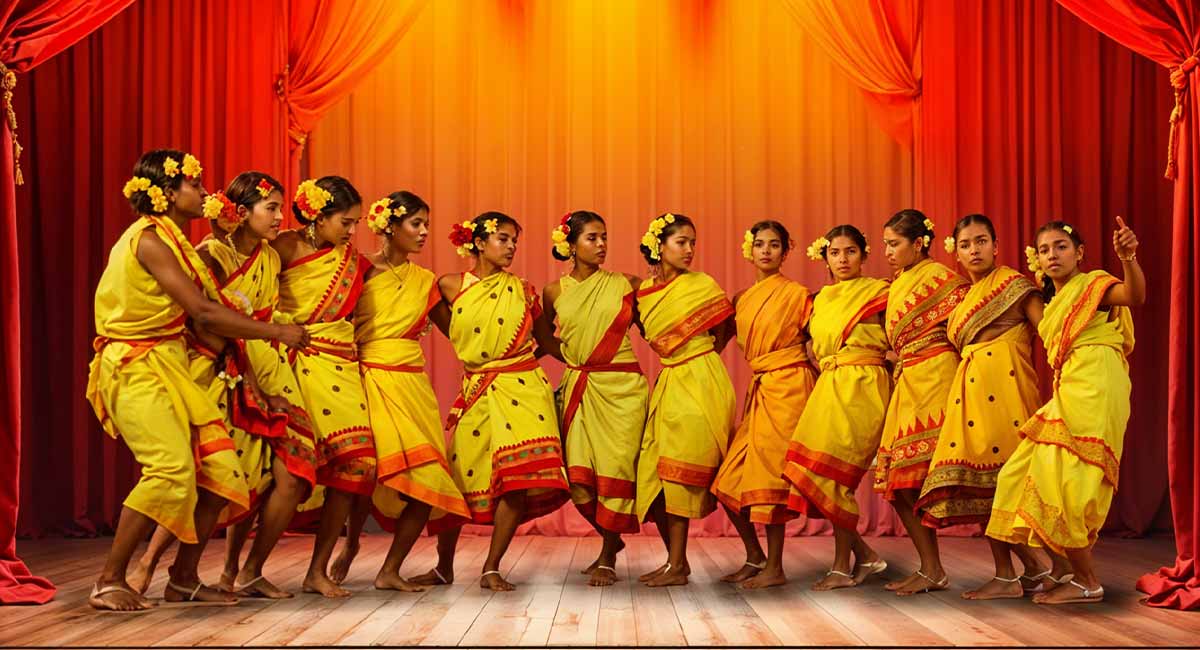Parab Tribal Festival
Odisha, a land rich in culture, history, and natural beauty, hosts a vibrant tapestry of festivals that reflect its diverse traditions. Among these, the Parab Festival stands out as a colorful celebration of tribal heritage, art, and culture. The Parab Festival, which offers an intriguing glimpse into the lives of the indigenous people who make up the state’s core, is held annually by the Odisha State Tribal Museum and the Odisha Tourism Department.
Held every year during October and November, Parab is not just a festival — it is a cultural movement that brings together tribal artisans, musicians, dancers, and sports enthusiasts from across Odisha and neighboring states. It is a true celebration of identity, creativity, and communal harmony.
The Essence of Parab
The word “Parab” in the tribal dialect translates to “festival” or “celebration.” Staying true to its name, Parab is an explosion of joy, music, dance, and vibrant traditional attire. It showcases the richness of Odisha’s 62 tribal communities, each with its distinct customs, languages, and art forms.
Through Parab, the state aims to preserve and promote its tribal traditions, many of which are at risk of fading away in the modern world. The festival provides a vital platform for artisans and performers to showcase their talents, and it plays a critical role in fostering pride among tribal communities.
Where and How It’s Celebrated?
Despite being a state-level festival, the Parab Festival is centered in the Koraput district, which is renowned for its stunning scenery and dense tribal population. Over the years, however, it has expanded, with events held in Bhubaneswar, Rayagada, Malkangiri, and other parts of southern Odisha.
The festival typically lasts for several weeks, culminating in a grand finale attended by thousands of visitors, tourists, artists, and dignitaries. Cultural processions, exhibitions, and competitions form a significant part of the festivities, with open-air stages and sprawling grounds adorned with colorful decorations.
Parab Festival Highlights You Can’t Miss
Here are some key highlights of the Parab Festival:
-
Tribal Dance and Music Performances
One of the most captivating features of Parab is the variety of tribal dance and music performances. Dressed in traditional costumes, artists perform age-old dances like Dhemsa, Ghumura, and Chhau, each telling stories of valor, love, harvest, and deities. The captivating melodies of the tribal instruments and the pulsating beats of the traditional drums enthrall every spectator.
These performances are more than entertainment — they are the living embodiment of tribal history, myths, and beliefs.
-
Handicrafts and Art Exhibitions
Parab serves as a mega-marketplace for tribal artisans to exhibit and sell their crafts. Visitors can explore a stunning array of hand-woven textiles, bamboo and cane products, terracotta sculptures, tribal jewelry, and traditional paintings.
The festival promotes sustainable livelihoods for tribal artisans, helping them find recognition and fair prices for their intricate, handmade products. For tourists, it’s an excellent opportunity to purchase authentic souvenirs while supporting indigenous artists.
-
Traditional Sports Competitions
Sports and physical prowess play an essential role in tribal life. To celebrate this, Parab hosts a variety of traditional tribal sports competitions, including archery, kabaddi, and traditional wrestling. These events are not only thrilling to watch but also preserve and promote games that have been part of tribal culture for centuries.
People of all genders enthusiastically participate, and the competitions often become community events filled with cheers, laughter, and festive spirit.
-
Food Stalls and Culinary Delights
No festival is complete without its share of delicious food! At Parab, visitors can savor authentic tribal cuisine — flavorful yet straightforward dishes made using local grains, vegetables, and forest produce. Must-try items include millet-based dishes, bamboo shoot curries, and country chicken preparations.
For food lovers, it’s a rare chance to experience the organic, earthy flavors of Odisha’s tribal kitchens.
-
Workshops and Seminars
Parab is also a platform for academic and cultural exchange. Various seminars, workshops, and storytelling sessions are organized during the festival to promote discussions on tribal rights, livelihoods, education, and the preservation of art. Renowned scholars, artists, and tribal leaders come together to brainstorm solutions for the challenges faced by tribal communities today.
Why You Should Experience Parab Festival?
Visiting the Parab Festival is like stepping into a living museum, where the exhibits come alive through singing, dancing, creating, and sharing. It offers an authentic, unfiltered view of tribal life, something that mainstream tourism often misses.
Here are a few reasons why Parab should be on your travel bucket list:
- Cultural Immersion: Experience the hospitality of Odisha’s tribal communities, learn about their traditions, and engage with them.
- Unique Shopping Experience: Take home rare, hand-crafted tribal artifacts that you won’t find elsewhere.
- Nature and Adventure: Combine your festival visit with trips to nearby attractions, such as Deomali Hills, Gupteswar Cave, and Duduma Waterfalls.
- Photography Heaven: From vibrant dances to colorful costumes, every corner of Parab is a photographer’s dream.
- Support Tribal Communities: By participating, you help preserve ancient cultures and empower indigenous artists.
Final Thoughts
The Parab Festival of Odisha is more than just an event — it is a vibrant ode to the timeless spirit of tribal communities. It celebrates diversity, unity, and the indomitable human spirit. In a rapidly changing world, festivals like Parab remind us of the beauty of ancient traditions and the importance of cherishing and preserving them.
If you’re a lover of culture, art, music, or just the pure joy of human connection, Parab will leave you with memories that last a lifetime. So, mark your calendars and get ready to dance to the beat of Odisha’s tribal heart!


